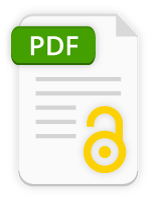Can Hepatitis B Virus (HBV) Reactivation Result from a Mild COVID-19 Infection?
 ,
Sofia Vasileiadi,
Eleni-Myrto Trifylli,
Nikolaos Papadopoulos
,
Sofia Vasileiadi,
Eleni-Myrto Trifylli,
Nikolaos Papadopoulos  ,
Melanie Deutsch
,
Melanie Deutsch

Full text: Download
Abstract
Hepatitis B virus reactivation (HBVr) is a well-described result of immunosuppressive therapy initiation in various diseases, with the dose and duration of treatment being the main factors determining the probability for reactivation. Such cases have also been described in COVID-19 patients treated with immunosuppressive therapies. Nevertheless, cases of COVID-19 infection that led to HBVr with no concurrent immunosuppressive treatment or any other related cause have also been reported. By that observation, we present a patient followed for a period spanning 20 years with HBeAg negative chronic HBV infection and non-detectable HBV DNA who, after a mild COVID-19 infection treated only with low-dose and short-duration-inhaled corticosteroids (ICS), developed elevated AST and ALT as well as elevated HBV DNA levels. Other etiologies of abnormal liver biochemistries during the diagnostic workout were excluded; thus, the diagnosis of HBV reactivation was established. Treatment with entecavir was initiated, leading to the normalization of AST and ALT levels and a decreasing trend of HBV DNA levels. Since other causes of reactivation were excluded, and the ICS dose and duration were found baring only a very low risk (<1%) for HBVr, COVID-19 infection could be considered the most probable cause of reactivation, hence underlining the need for the close monitoring of those patients.

